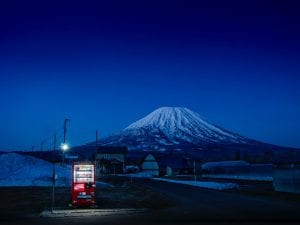This retrospective of Dorothea Lange (1895-1965) spans work from the early 1930s to lesser-known pieces of the 1950s. The generous selection is complemented by riveting slides that put the iconic works in the context of their series. There’s an eye-opening alternative slide to the one known as Mother and Child which shows a young girl leaning despondently against a barbed wire fence as her mother watches from behind. In the photo taken just before it, the girl is smiling, giving the viewer a less homogeneously melancholy and humanistic view of The Great Depression.
In 1932, Lange dropped studio portraiture to chronicle economic hardship in the San Francisco area. With Paul Taylor, the professor who later became her husband, Lange published An American Exodus (1939). Some of these works are harrowing to contemplate. Migrant Mother documents the plight of a mother flanked by her three children: the mother had just sold the tyres on her car when Lange offered to help her by making her distress known to the wider public. Another heart-rending piece is White Angel Breadline which focuses the viewer’s attention on an isolated beggar using the same principle: he faces us in a crowd of men turned in the opposite direction. Both photographs provoke near-religious connotations in audiences, and are deeply affecting.
After constituting an archive for the Farm Security Administration, Lange documented the ship-building industry in the San Francisco Bay area. In 1942, she turned her attention to the Japanese internment camps. Japanese Children with Tags is particularly poignant and Manzanar Relocation Center gives the viewer a haunting long-shot of the camp. The exhibition closes with images of public defenders and prisoners in the 1950s, when the concept of justice was extended to offer legal representation to those in need.
Erik Martiny
The show runs at Jeu de Paume, Paris, until 27 January. Find out more here.
Credits:
1. Paul S. Taylor, Dorothea Lange in Texas on the Plains, circa 1935. Portrait of Dorothea Lange by Paul S. Taylor. © The Dorothea Lange Collection, the Oakland Museum of California, City of Oakland.
2. Dorothea Lange, Drought-abandoned house on the edge of the Great Plains near Hollis, Oklahoma, 1938. © The Dorothea Lange Collection, the Oakland Museum of California





